UI Design for Session Keys Grand S/Y (English)
Category: Case Study @en
With the legendary Steinway D4 as well as with the Yamaha CFIIIS the music software Session Keys Grand S/Y by e-Instruments is presenting the most popular grand pianos of our time. Both pianos are playable in two separate rooms, with the lid opened and closed, respectively.
On the one hand, Session Keys Grand S/Y presents pianos whose features – as opposed to a futuristic synth VST – have their origin in real life. Here, on the other hand, the sound can be adjusted by manipulating a set of unique parameters in a way which would be impossible in reality. The great challenge for Session Keys Grand’s interface design lay in finding the appropriate means to control such a wide variety of sounds.
Searching for the Right Visual Language
Productive and creative environments demand interfaces with a fast, intuitive and slim handling. For this purpose, it makes sense to stick to the accustomed conventions regarding the controls. A control element is supposed to have a “stimulative character”, in other words, it has to communicate its handling and effect in an honest manner: a rotary knob suggests that it can be turned. This expectation is to be answered.
In so doing, referring to familiar control concepts which are rooted in the user’s real environment as well as emulating real objects (skeuomorphism) can be helpful for a good user experience. In Session Keys Grand S/Y, for example, the milk glass panel conveys to the user that the controls are not directly part of the actual instrument. The active elements’ glow suggests a light source sitting behind them – a signal which we know from active buttons of electronic devices.
Parameters without Relation to Reality
Besides an acoustic pattern distinctive for grand pianos, the pentamorph controller allows the creation of fantastic soundscapes going far beyond the obvious. With a single controller the piano’s sound can be changed on the fly, from the characteristic sound of a Steinway to atmospheric sounds which can hardly be derived from natural reality.
Therefore, using wooden, piano lacquer-covered knobs to control a partly irreal range of sounds would mean barking up the wrong tree. Hence, we decided against referencing a real model and instead rather divided sound source and control layer from one another.
Execution and Organisation of the GUI
Flat, minimalistic controls determine the operating layer’s appearance. The color palette only needs a few graduations and can easily be distinguished from the detailed piano render images.
Despite this reduction, we do not strictly dismiss ornamentation and decorations, they exist, for example, on the panels in the form of separating lines. The strictly hierarchic layout is being structured through an elaborate tab-architecture, carefully placed typography and sufficient whitespace. The controls on Session Keys Grand S/Y are reduced to their essential functionality. The minimal design makes perfect use of all its advantages: Thus, within the confines of the smallest space the interface maintains a high degree of complexity and yet does not become confusing.
We designed the interactive elements to be especially rich in detail and made sure that they clearly stand out. Here, the communication remains consistent: The same color shades are always being used for active as well as inactive button states. This helps guiding the user and speeds up the workflow.
Design Research Piano Icons. They are used to switch between the versions: open and closed (here active).
A Tailored Interface for the Screen
Session Keys Grand S/Y goes beyond a mere simulation. E-instruments readiness to detach the software’s interface a bit from reality enabled a custom-made UI language that is tailored for the medium of the screen. The result is an honest, organised and clear user interface.
Hence, we hope to have designed an instrument which functions ideally on its platform – the screen. Thanks to an interface which precisely and quickly leads the musician to his desired result.
Screenshots:
- Piano Screen
- Keys Screen
- Settings Screen
- Animator Screen
- Piano Screen
- Pads Screen
- Settings Screen
- Animator Screen

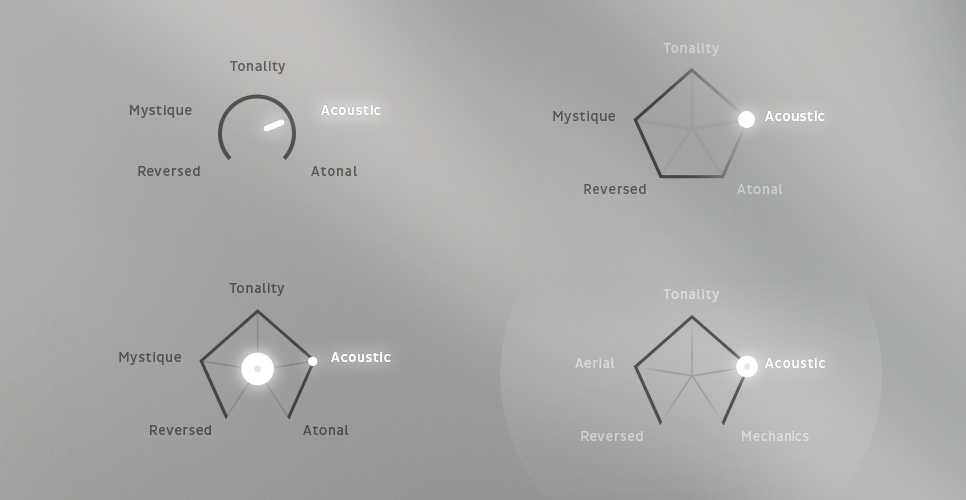
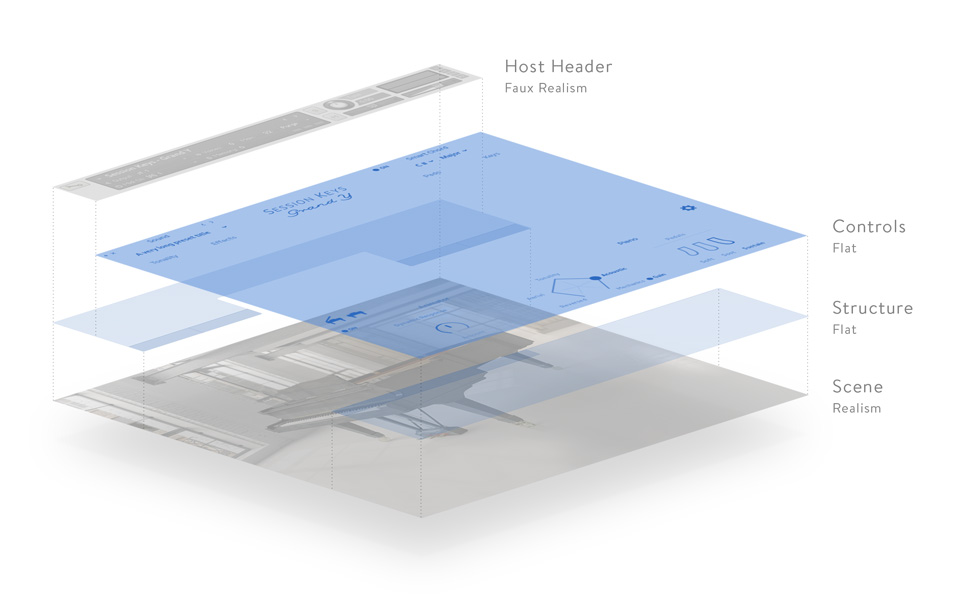


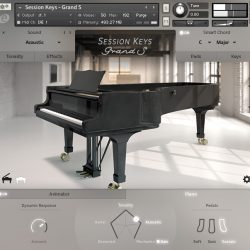
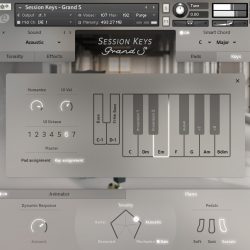
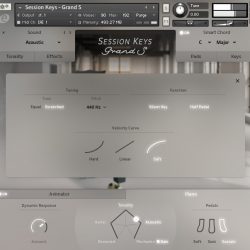
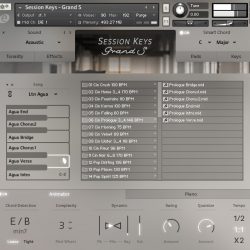
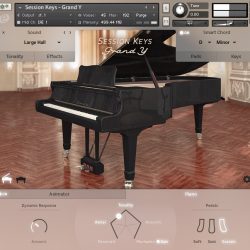
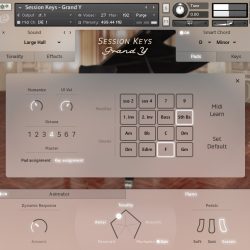
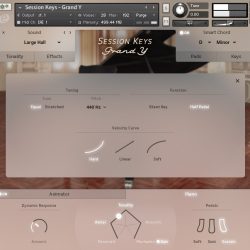

New answer